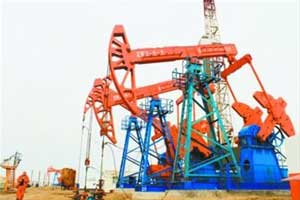Drag reducing agents (DRAs) are organic compounds that are injected into pipelines to reduce turbulence. They do so by changing the molecular vibration patterns of the crude oil. Normally, oil companies use a roller system to do this. The compounds are injected into the center of the roller where it can easily mix with the oil. The mixture expands due to natural buoyancy and thus, creates a decrease in the turbulent molecules. This decreases the friction and makes the pipeline easy to maintain.
How does drag reducing agent work? It increases the molecular weight of the pipeline by decreasing the turbulent molecules. Drag tends to increase with the increase in pipeline speed. This means that as you increase the speed of your pipeline, the drag will increase also. Using a drag reducing agent, you reduce the increase in the molecular weight and thus, reduce the turbulence.
In order to understand how does drag reducing agent work, it is important to first know about two types of pipeline boosters. One is the flow improver, which is also commonly referred to as a gravity flow optimizer. The other is a turbulence suppressor, which works in conjunction with gravity flow optimizers.
Gravity flow optimizers rely on drag reducing agents that help to force the oil through the pipelines at relatively low pressure. Because of the lower pressure, the oils settle faster during transportation, reduce lubrication, and increase friction. They do this by decreasing the porosity of the oil. This is because it lacks the required amount of surface area, thus making it thicker and more viscous.
The other kind of drag reducing agent is the turbulence suppressor. This acts in the opposite manner of the gravity flow optimizer. It increases the turbulent drag, which keeps the moving oil or gas at a higher pressure. However, it also reduces the air pressure at the same time. This results in an increase in the amount of oil or gas that can be carried through the pipes. As a result, the peak pressure rises.
An anionic polyacrylamide flow improver works in much the same way. Its main difference is that an anolylate is much heavier than an acrylic. Therefore, the anolylate does not sink as much as acrylic. Also, while the anolylate works better at low temperatures, the only polymer does not do as well.
When working on a pipeline, it is important to know the end product that you are trying to create. This is especially the case with a heat pump. When the temperature rises the oil in the inlet or combustion chamber increases and this causes a pump to push harder. As a result, the oil is pushed past the diffuser where the heat pump continues its operation. A diffuser is a device that prevents the oil from coming into contact with the hot surface and thus decreasing the rate of heating.
In order to decrease the frictional pressure drop at the inlet of a pipeline, there are two methods available. They include internal deformation or the pumping of air to increase the temperature at the inlet. External deformation occurs when the pipe wall cracks or breaks due to age, pressure, and other forces. As a result of this cracking, the flowing fluid could spill out into the workplace.
The third means of reducing the pipeline flow rate is by the use of additives. These additives are usually water or oil. The water can be used to raise the temperature of the crude. The oil will then absorb some of the heat and continue with the crude oil flow. In the long run, this will be very beneficial because the lowering of the temperature at the inlet will prevent the pipe from breaking and causing an accident.
Although there are many different ways on how to reduce drag, the most common and efficient are through the use of high-pressure and high-volume pumping methods. These pumps will be able to pump more fluids at one time without wasting too much energy. These are also able to pump at faster speeds which will allow for better crude to heavy oil ratios and pipeline sizes.
The best thing about using these pumping methods is that there are minimal environmental hazards associated with their operation. Unlike line pressure and suction pumps that have to deal with turbulent flow, these pumps do not have to deal with this because the turbulence is caused by the oil being pumped into the pipeline. Line pressure and suction pumps also need to deal with oil spills. Drag reduction methods will still have to deal with pipeline accidents and other pipeline issues but they do not have to deal with the environmental hazards associated with them. Thus, these are some of the advantages of using drag reducing agent.






